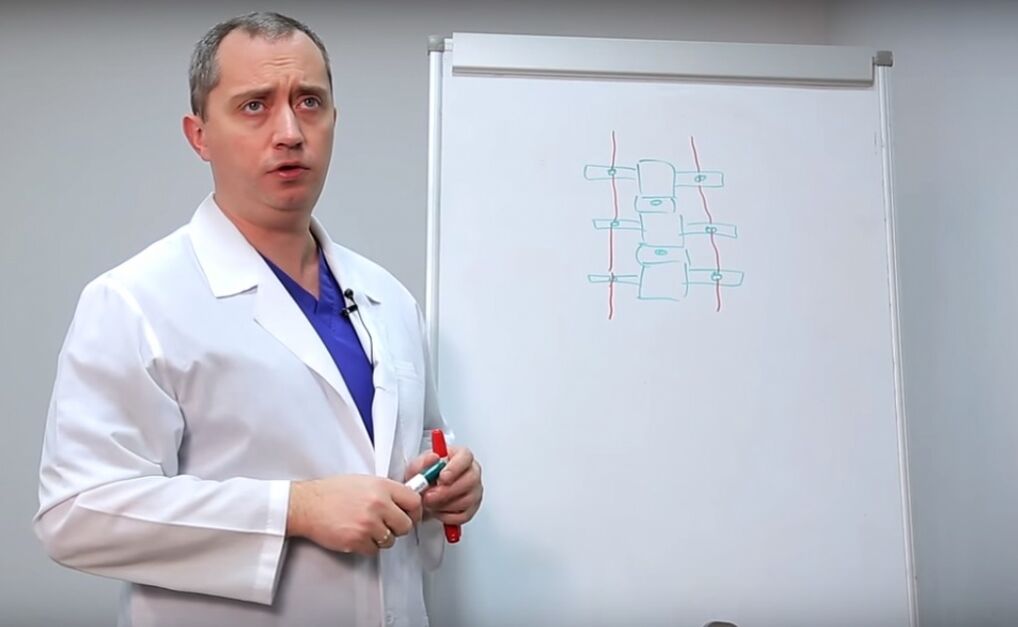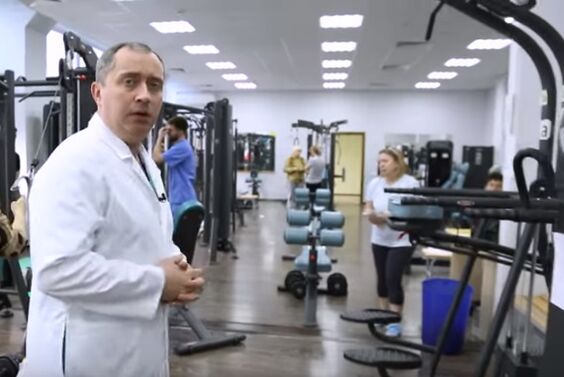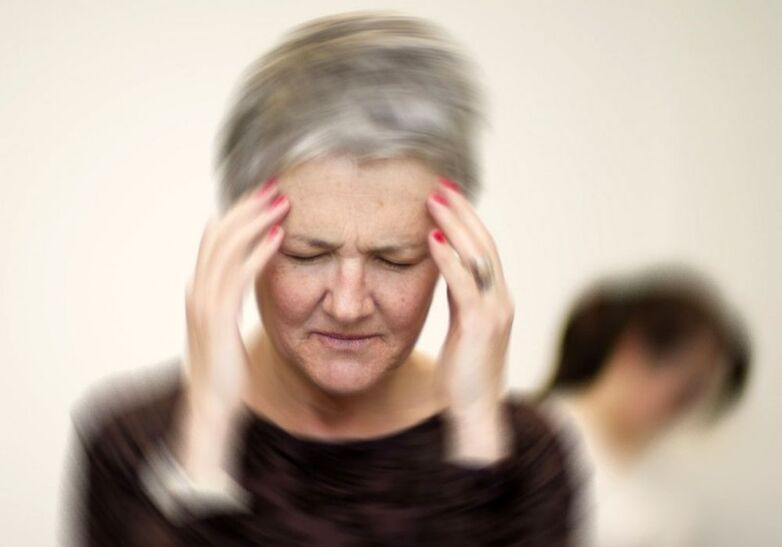Osteochondrosis of the cervical column is a pathology, characterized by the development of destructive depth processes in the tissues of the articular cartilage.These phenomena develop due to the physiological weakening of the nutrition of intervertebral discs, which leads to the fact that the fabric of cartilage is poorly regenerated (restored) even after the minor microtrauma of the spine.
Most patients, especially the inactive lifestyle, constantly load the muscle corset of the neck, because they are forced to stay in the same pose for a long time.All these factors contribute to the development of the disease.
Attention.Cervical osteochondosis is one of the most dangerous diseases for health and even human life.This is due to the fact that a large number of vital vessels are concentrated in the neck.
A little anatomy
In the structure of all the vertebrae of lumbar, thoracic and cervical parts, there are transversal processes.
In the chest region, the ribs are attached to the transverse processes.The bodies of the vertebrae of the lumbar segment are the most important, because this department has a large mass.The deep muscles of the lower back are attached to the transverse processes of the lumbar vertebrae.Between the vertebrae are the elastic cartilage (discs).

Structure characteristics
The cervical column is characterized by certain anatomical characteristics.Specialists concentrate public attention that it is only in transverse processes from 1 to 6 cervical vertebrae.
The basal department of the brain can be considered as a "computer center", in which the data is collected and analyzed from the entire organization.The organ presented controls all automatic body processes (movement, breathing, temperature, coordination, heart rate, perspiration, etc.).
Doctor's advice.If you have diagnosed cervical osteochondosis and the attending physician tells you that this is absurd and that this pathology can be healed with ointments and some lotions, it is better to flee such a doctor as much as possible.
Pathogenesis of osteochondrosis
With cervical osteochondosis, the vertebrae of the vertebrae are observed compared to each other, which leads to the compression of the arteries.Compression of these vessels can cause an ischemic stroke of the brain.These phenomena are completely fixed.
If a person has a small cervical osteochondosis, but no one has treated or treated it incorrectly, with a minimum of mechanical effects, the displacement of the vertebrae is observed, the blood circulation is disturbed, the patients often complain of dizziness and nausea.After a while, the patient loses consciousness.This is often found in people who have injured an accident.

Clinical signs of the disease
With the development of cervical osteochondrosis, the following symptoms are observed:
- Increase in perspiration;
- Weakening the muscle frame of the neck;
- Hand numbness;
- increased fatigue;
- loss of consciousness;
- hypertension;
- nausea and stunning;
- Posture problems;
- insomnia;
- limited movements;
- unreasonable bad humor;
- chest pain;
- a feeling of pouring the goosebumps into the body;
- During the rotation of the head, a crunch is heard;
- Evils in bones and chills;
- Lively pain in the shoulders and necks;
- violation of coordination;
- Vision and hearing problems.
Advice!When you identify the above characteristics, you must contact an experienced specialist - therapist, neuropathologist, vertebrologist, traumatologist, cardiologist or surgeon.After an in -depth diagnosis, the doctor may diagnose and choose optimal treatment tactics.

Complications
Degenerative-dystrophic processes in the tissues of the spine violate the functional activity of this organ.In other words, there is "wear" of the spine:
- limited mobility of the spine;
- decrease in the height of intervertebral discs;
- the formation of hypothalamic syndrome;
- respiratory judgment due to spinal cord damage;
- violation of blood flow in the spinal cord;
- violation of the swallowing reflex;
- internal organ dysfunction;
- nerve compression;
- disk loss;
- Breathing violation;
- vertebral deformation;
- vestibular disorders;
- Neurocirculatory dystonia;
- Speed-shoulder periarthrosis;
- thyroid dysfunction;
- Epicondalite;
- Stenosis of the intervertebral canal;
- The formation of protuberances and intervertebral hernies.

Note!All these complications require immediate help, they relate to dangerous conditions which aggravate not only the quality of the patient's life, but can also cause his death.
The doctor also notes that with osteochondrosis, a brain stroke is sometimes observed.In this case, the brain is affected and in fact any regulation of the work of the body is disturbed.In the holes of the transverse processes of the vertebrae, not only the vessels, but also the nerves pass.When the vertebrae are moved, they are also pinched.For this reason, the muscle weakness of the hands is observed, complete or partial of their paralysis.
Very often, patients turn to trauma because they have a shoulder, take photos, undergo a physiotherapy course (massage, electrotherapy, etc.) and pain syndrome is not eliminated.
When you contact a specialized clinic, the institution specialists first carry out a complete examination and then only, on the basis of the results, an appropriate treatment is prescribed.With a slight compression of the blood vessels, the blood flow in the brain is disturbed, which causes the development of high blood pressure.In 95% of cases, hypertension develops due to the compression of blood vessels with osteochondrosis.

Doctors have developed special exercises that aim at the decompression of blood vessels and nerves, the restoration of the functions of the muscle-ligament of the neck.
If the patient is diagnosed with cervical osteochondosis, it is recommended to do at least three exams:
- X -ray.With his help, information on the state of the cervical column segment is obtained.The images must be carried out in 2 projections and planes.In addition, this method allows you to establish the mobility of the damaged vertebrae, the displacement of their body, the presence of salt deposits and the appearance of neoplasms.
- Doplerography or dopplerometry.Allows you to assess the permeability of blood vessels using a blood flow calendar.During the procedure, the patient is installed special sensors in places of alleged location of the patronage.
- IRM of the cervical column.It may be the most informative, painless and precise diagnostic method.Using this method, not only is the presence of the disease revealed, but also the degree of its severity.
Conclusion
Osteochondrosis is a very insidious and dangerous disease.It is extremely difficult to diagnose this pathology in the first stages of pathogenesis, because it passes almost asymptomatic.With the progression of the disease, many signs are confusing, because the problems of blood flow can cause suspicions of disorders in the heart of the heart.Consequently, doctors recommend, with the least manifestations of pain in the cervical column, immediately contact specialists.This will allow you to get rid of problems in the early stages and prevent the development of various types of complications.













































